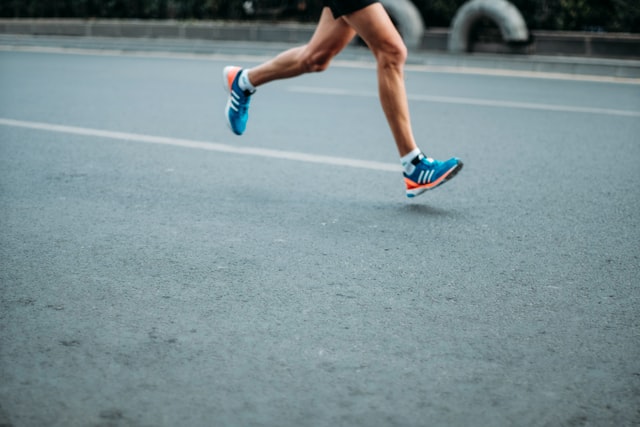By WIN Provider: Jeff Dill, Physiotherapist
Do you wonder what causes shin splints? When you start increasing your activity do you start to experience pain along the front of your lower leg, that is associated to shin splints?
With the warm weather now here, more people are putting their running shoes on and hitting the roads and trails for training runs.
If you have ever trained for a running race or been involved in sports such as soccer or basketball, you more than likely have experienced, or have at least heard the term, “shin splints.”
But what is it, why does it happen, and how can you treat it?
What are “Shin Splints” and What Causes Shin Splints
We have hundreds of muscles in our body and each one has an origin and an insertion. In the lower leg, specifically, there are several muscles that originate on the back side of our tibia (shin bone) and insert into various parts of our feet.
These muscles play a large role in shock absorption and the mechanics in our feet and ankles when we walk or run.
With regards to shin splints, a few of these muscles become very important:
- soleus: plantar flexes (PF) our foot (points the foot down)
- tibialis posterior: controls pronation, PF and turns the foot in
- flexor digitorum longus: PF foot and flexes toes
These muscles all have their origins on parts of the posterior aspect of the tibia.
When we increase our running volume, frequency, or intensity too quickly, these muscles become overworked and place increased stress on the tibia. This increased load irritates the bone and its periosteal lining to the point where we begin to feel pain along the postero-medial aspect of our shin, i.e., “shin splints.”
Other Contributing Factors
Although training error is the most common cause of shin splints, other factors which can play a role include:
- Pes cavus or pes planus (high / low arches)
- Running surface (concrete vs dirt trail)
- Fatigue (higher risk when running while already fatigued)
- Poor footwear (old or worn-out shoes)
- Lack of lower limb flexibility
- Strength imbalances
- Obesity
- Females > males
Other Possible Diagnoses
If you are having pain in your shin, it’s important to get it looked at as soon as possible as other conditions can closely mimic shin splints, but will involve different treatment protocols, including stress fractures, chronic exertional compartment syndrome, popliteal artery entrapment, muscle tears, and tendinopathies.
Treatment
When treating shin splints the first thing that needs to be addressed is training load.
This doesn’t necessarily mean complete rest, but at least a significant reduction in the training volume or intensity to allow for that cortical irritation to begin to settle. After that, we need to look at lower extremity flexibility, strength (calf/tibialis posterior/hamstrings/glutes), foot structure, and the shoes you are using.
Oftentimes looking at the wear pattern on the bottom of our shoes can tell a very good story of our running mechanics & loading patterns which often point to muscular imbalances.
The treatment timeline for shin splints depends on how severe it is upon initial presentation but will usually be anywhere from a couple of weeks, if caught early, to a couple of months.
If you suspect you may have shin splints, come in to see a physiotherapist at WIN Health and we will develop a treatment plan for you to get you back to pain-free running as soon as possible!
Get started by Booking Online or Contact Us and we can help you arrange a visit for your physiotherapy treatment at WIN Health.


